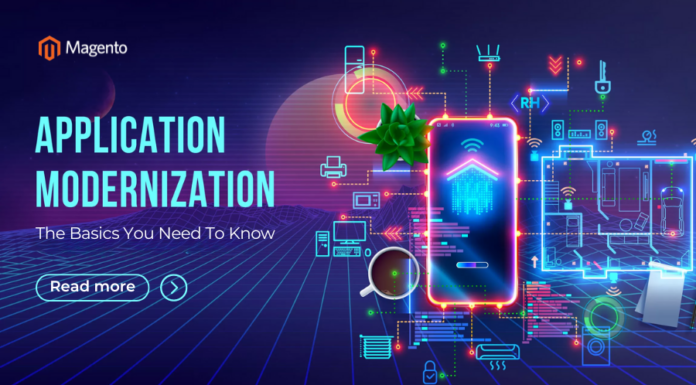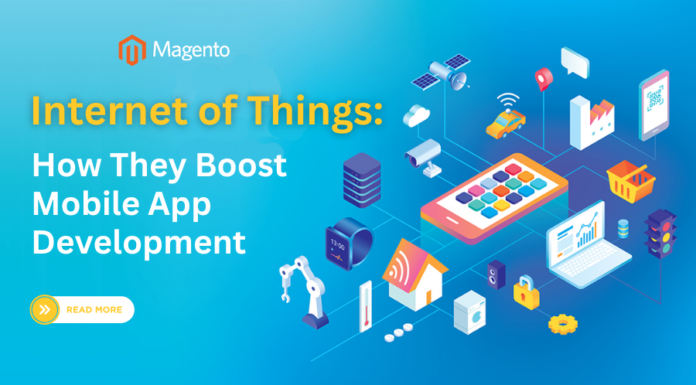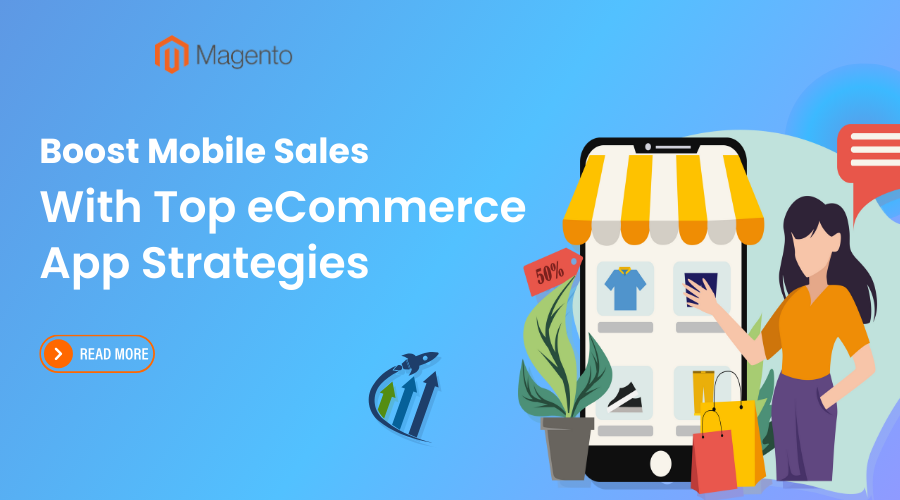
Mobile eCommerce apps and a mobile-first approach for eCommerce businesses are now a must. There are billions of mobile devices around the world, and there may be two mobile phones for each person. When we talk about mobile devices, it is not just mobile phones but also tablets and other devices.
People are using mobile phones more and more as there are so many apps that help them in their daily lives. Mobile eCommerce apps are like online shop fronts that they can walk into at any time. The combined popularity of mobile phones and eCommerce apps has boosted mobile sales for eCommerce companies.
Businesses that are making a switch to the eCommerce landscape are putting a lot of stress on mobile eCommerce development through websites and specific apps. As more and more people turn to mobile phones for their daily purchase needs, mobile apps centered around eCommerce app development are of paramount importance.
In this blog, we will discuss eCommerce mobile app development services and how they are influencing the eCommerce market.
Table of Contents
I. Understanding the mobile eCommerce market
1.1. Current trends and statistics
- Mobile shopping growth rates
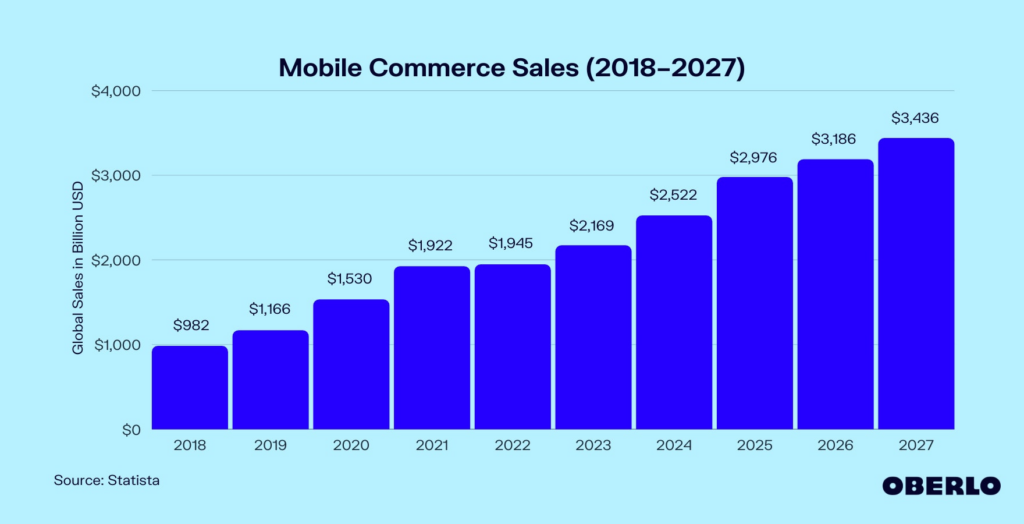
The mobile eCommerce market is a major niche of the complete eCommerce market. Mobile sales for the retail eCommerce market have gone up to more than 500 billion USD worldwide. The mobile ecommerce market is growing in its user base as more than half of the people accessing ecommerce platforms are doing so through mobile ecommerce apps.
- Consumer behavior on mobile vs. desktop
According to studies, nearly 50 percent of eCommerce shoppers use their mobile phones to compare the pricing of products on different eCommerce platforms. Using mobile phones for this action is easier for people because people can easily access their phones anytime, anywhere. For a lot of people, eCommerce shopping and comparing products is a leisure activity that they do in their free time.
However, we cannot dismiss desktop browsing and shopping because the user conversion rate into purchases is slightly higher for desktop sales than for mobile apps. All things taken into consideration, we can say that mobile eCommerce is at par with desktop-mode shopping and might increase in the next few years.
1.2. Challenges in mobile eCommerce
- User Engagement
On the mobile front and mobile eCommerce apps, the biggest challenge is building user engagement among the shoppers. People also have multiple eCommerce shopping apps in one place. Therefore, they may switch from one platform to another very frequently. Building user engagement for longer periods can be difficult for eCommerce strategies for 2024.
- Conversion rates
The conversion rates of leads into actual mobile sales are lower than those of the desktop. The conversion rates for desktop and mobile browsing for eCommerce apps are 3 percent and 2 percent, respectively. Converting the leads into users and buyers can be a tricky process, but with good products and interactive UI, this is possible.
- Shopping cart abandonment

A lot of people like browsing through mobile ecommerce apps and categories. They also add certain products to their cart in hopes of buying them soon. However, they abandoned the cart and did not go for immediate purchase. The lack of immediate purchase for the products can reduce profits for eCommerce businesses.
II. Optimizing mobile app design for enhanced user experience
2.1. Simplifying the user interface
- Importance of a clean, simple design
Users of eCommerce apps like a no-nonsense app that easily provides access to products that they want to buy. A complicated, distracting user interface is not a good option. A simple and minimalistic design that makes the products the heroes of the app is a good choice for an eCommerce app development company. A clean and simple design does not distract the audience from the activity they are supposed to undertake.
- Tips for minimizing clutter
The simplification of navigation, the streamlining, and the categorization of product listings also help minimize clutter on the shop front. The use of product images and the reduction of textual images also reduce the noise around products in the app interface.
2.2. Improving navigation
- Easy-to-use menu structures
To improve the navigation algorithm of the eCommerce app, eCommerce app development services utilize easy-to-use menu structures and simple product listings that are easy for the audience to understand.
- Search functionality enhancements
Increasing the visibility and accessibility of the search bar and enhancing the search algorithm with AI is also a step that ensures that the audience navigates the app easily. A better search algorithm and integration of image recognition for search can also quicken the search process and avoid user frustration. These examples can be implemented for custom eCommerce application development.
2.3. Mobile-friendly checkout processes
- Streamlining checkout for speed and efficiency
The eCommerce app should be designed in such a way that the checkout process is a summary of the product specifications and prices. A long checkout process with incomplete information can confuse the user. A lot of users abandon their cart in the checkout process because they get confused or change their minds.
- Reducing steps to purchase
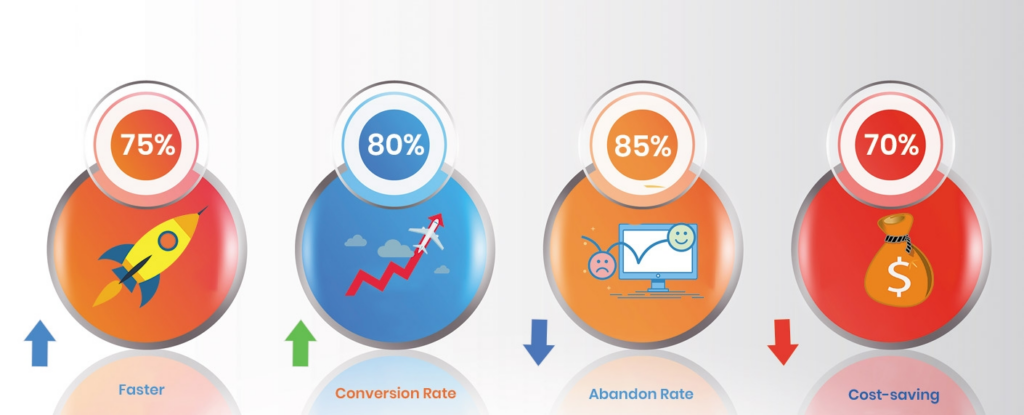
The steps to purchase define the purchase journey for the audience. The purchase journey is a crucial part of the user experience. To increase the conversion rate and make purchases possible, the eCommerce application should have only two to three steps in the final purchase process. Anything that gets completed in a few clicks is very easy for the user.
2.4. Personalization and recommendations
- Leveraging user data for personalized experiences
Personalized recommendations for better-personalized experiences on the platform are an enhancement that users engage in. Today, there are many advanced AI and ML algorithms that an eCommerce app integrates with to analyze user data and collect product recommendations for the audience.
- Implementing recommendation algorithms
The eCommerce app also needs to use recommendation algorithms that run on ML and AI. These algorithms need to integrate with the background data and the user heat maps and usage data for proper analysis and results.
III. How to leverage specific features to boost mobile sales?
3.1. Push notifications
- Best practices for engaging users without spamming
Instead of spamming users about offers and new discounts, using push notifications can help improve the usage time for an eCommerce app. Cleverly put push notifications about offer alerts, recommendations, and reminders about certain products being back in stock. Engaging notification lines can increase user engagement levels and expand the app’s user base.
- Personalizing notifications based on user behavior
The notifications of the apps can also be personalized based on user behavior. The application of personalization helps send out specific messages to the user and engages them with the eCommerce app with human-like conversations.
3.2. Mobile payments and wallet integration

- Simplifying payments with mobile wallets & One-click purchasing
The user needs to have ease of access to payment options for the sales to go through into transactions. eCommerce apps should be integrated with preferred payment modes and mobile wallets so that the user can easily make a purchase. The most used payment modes should be accessible with one click so that the user does not abandon the purchase.
- Ensuring secure payment methods
All the payment methods and gateways that are integrated into the mobile eCommerce app should be secure and safe from fraudulent activity. The company should check the backend security provisions from time to time to make sure that there are no imminent cybersecurity threats.
3.3. Augmented reality (AR) & Virtual reality (VR)
- Enhancing product visualization with AR
Augmented reality can be used in the eCommerce app algorithm to ensure that there is better product visualization and experience before purchase. AR can help the user try out the product and interact with it so he can be sure about the purchase he is going to make.
- Creating immersive shopping experiences with VR
Using the technologies of AR and VR, the app interface can create immersive shopping experiences and interactions that mimic real life. The technologies can engage multiple senses of the user and create ways to improve user engagement and conversion rates.
IV. How are we enhancing mobile app marketing?
4.1. App store optimization (ASO)
- Strategies for improving app visibility in App Stores
App store optimization is the basis of promotional activities around the app in the app store. Without the techniques of app store optimization and optimal visibility, all other promotional activities will fail.
- Importance of keywords, titles, and descriptions
There are many ways to optimize the app positioning for the visibility of the app. The app store description should be substantial but not unnecessarily long. The company should also use proper titles and tags in the description to be put on display. The team should also incorporate relevant keywords into the app description.
4.2 Social media integration

- Leveraging social platforms for app promotion and engagement
The mobile eCommerce app should be integrated with multiple social media apps and channels for promotional purposes. When the eCommerce company has a relevant presence on social media, more users and leads can connect with the eCommerce platform. There can be bilateral promotional communication between the app and the users so that it is more popular and has more mobile sales.
- Encouraging social sharing within the app
The sharing of product recommendations, images, trial images, and reviews inside and outside the app can create conversations that organically make the eCommerce platform popular and relevant. People organically engage with the eCommerce app through social sharing and conversations.
4.3. Loyalty programs and incentives
- Designing loyalty programs specifically for mobile users
Every popular and dedicated eCommerce app should have loyalty programs. The app should have specific loyalty programs for mobile users so that mobile sales increase for the platform.
- Offering mobile-exclusive deals and incentives
Under this mobile-exclusive loyalty program, the eCommerce company can offer mobile-exclusive deals to frequent mobile buyers. Moreover, the app can also offer incentives to promote certain actions from the users active on the mobile app.
V. Utilizing data and analytics for continuous improvement
5.1. Tracking user engagement and behavior

- Tools and techniques for monitoring app usage
Mobile eCommerce apps can use heat maps to map out frequent actions by users. The app can also use analytics platforms and monitoring algorithms that run on the backend to collect and analyze user engagement data. Event tracking is also used in certain apps to collect user frequency data.
- Identifying key metrics for success
There are many parameters that the eCommerce app development agency should look into to determine user engagement trends. For example, the number of active users, the session length and frequency, and the retention rate for the app should be determined to determine how successful the app is among the users.
5.2 A/B testing for optimization
- Implementing A/B tests to improve user experience
A/B testing tools like Optimizely or Apptimize allow you to experiment with variations and determine which ones lead to better user engagement.
- Examples of elements to test: CTAs, layouts, and features
The A/B test algorithm should be applied to different elements of the eCommerce app. The eCommerce application elements include CTAs, layouts, and different features of the app that can be tested based on how popular they are and how frequently they are used by the people.
5.3. Feedback loops and user input
- Encouraging user feedback through surveys and reviews
The mobile eCommerce development team should also include mechanisms to collect reviews and user feedback from the user base. The platform should have different surveys and questions about the service, experience, and products. Users should be encouraged to give feedback and review the app and products.
- Adapting app features based on user suggestions and complaints
Based on the feedback received and the user suggestions made, the eCommerce development company should make changes to the layout and algorithms. The suggestions should be taken seriously and implemented for better user engagement.
Wrap up
There are many ways in which mobile sales and revenue for eCommerce apps can go up. From changing the UI of the app to simplifying the navigation, there is so much a company can do to attract more sales opportunities. Similarly, the app development company should engage with the audience and collect suggestions about the changes the app needs. So, if you want to drive mobile revenue, apply our winning strategies today!
Author bio
Kandarp Patel, CEO of Cinovic, leads with innovation in software development. He specializes in innovative solutions that drive business growth. With a rich background in technology and a passion for pushing the boundaries of digital transformation. He leads Cinovic with a vision to innovate and drive excellence in the tech industry.














![[SALE OFF] Discount 30% Off All Products On Christmas And New Year 2024 Christmas & New Year 2024 sale off from Landofcoder](https://landofcoder.b-cdn.net/wp-content/uploads/2023/12/xmas-banner-900-x-500-px-3-218x150.png)



